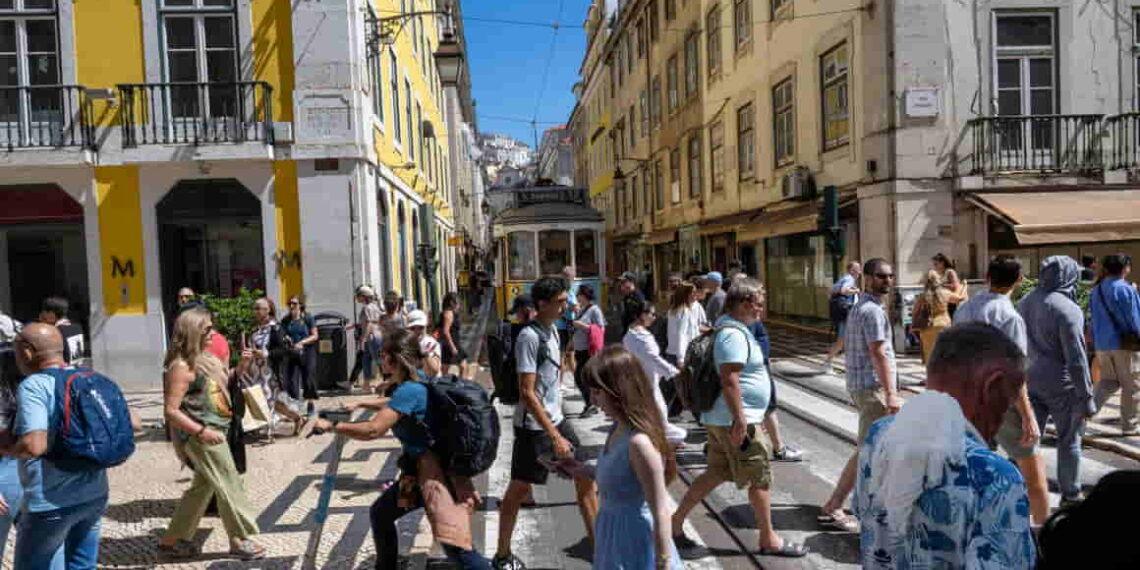Overtourism: A Persistent Challenge and the Push for Sustainable Travel Solutions in 2024 and Beyond
Overtourism became one of the defining concerns of 2024, with major destinations continuing to face the pressures of overwhelming tourist crowds. The summer season was especially chaotic, marked by protests, heightened visitor fees, and new restrictions aimed at managing the influx. In Barcelona, locals even took to spraying tourists with water pistols as a public demonstration of frustration.
Efforts to address overtourism, including government regulations and local initiatives, gained momentum throughout the year, but the demand for travel showed no signs of slowing down. Experts predict that overtourism will remain a critical challenge well into 2025, with significant implications for visitors, residents, and the destinations themselves.
The Need for Proactive Solutions
Paula Vlamings, Chief Impact Officer of Tourism Cares, a global nonprofit focused on sustainable tourism, highlights the urgent need for a strategic, proactive approach to tourism. “How do we conduct business? How do we market destinations? How do we serve local communities impacted by tourism?” she says, emphasizing that sustainable strategies are essential for the future as more tourists continue to flock to popular sites.
While there has been some progress — such as a growing interest in lesser-known destinations — experts caution that much remains to be done. Popular European cities like Paris, Barcelona, and London are likely to remain crowded, particularly during peak summer months.
Audrey Scott, co-founder of Uncornered Market, a sustainable tourism consulting firm, points out that while some positive changes have occurred in response to overtourism, the demand for travel will likely keep popular destinations struggling with overcrowding. “The crisis from last year might have led to some positive changes,” she says, “but 2025 will still bring the same challenges.”
Increased Regulations and Tourist Fees
In an effort to manage tourist numbers, many European cities have implemented higher taxes, banned cruise ships from historic centers, and restricted short-term rentals. Venice and Amsterdam, for example, have introduced higher tourism taxes and blocked cruise ships from entering central areas. In Japan, a popular tourist town near Mount Fuji erected barriers in 2024 to curb the growing number of selfie-takers. Cities like New York and Barcelona have also cracked down on Airbnb rentals.
Protests against overtourism were widespread in 2024, with locals in places like Spain, the Netherlands, and Greece taking to the streets to voice their frustration. Issues like rising housing costs, overcrowded public transportation, and a loss of community identity were central to these protests.
However, despite these challenges, tourism numbers continued to rise. In 2024, European countries saw a significant increase in foreign arrivals, surpassing 2019 levels. Portugal, for example, saw a 26% increase in visitors. Spain projected a 5% increase in tourism, and major events like the 750th anniversary of Amsterdam and the Catholic Jubilee celebration in Rome were expected to draw millions of extra visitors.
From Destination Marketing to Management
The shift from marketing tourism to managing it has become a key trend in 2024. Destination marketing organizations (DMOs) have started adopting the term Destination Marketing and Management Organizations (DMMOs), reflecting their broader role in managing both tourism and its impact on local communities.
Barcelona, a city often highlighted as a “poster child” for overtourism, changed its tourism slogan in 2024 from “Visit Barcelona” to “This is Barcelona.” This shift signals a commitment to balancing tourism growth with sustainable practices that support local culture and communities. Scott explains that effective destination management involves creating experiences that benefit both tourists and residents, while maintaining environmental and cultural sustainability.
In addition to better management, some cities are also focusing on educating and inspiring tourists. Amsterdam’s controversial “stay away” campaign aimed at discouraging rowdy tourists and Copenhagen’s CopenPay program, which rewards sustainable travel choices, are prime examples of how destinations are taking a more targeted approach.
Sharing the Tourism Load: Exploring Alternatives
While overtourism is a serious challenge, it has also led to new opportunities for less-visited destinations to shine. Many travelers are now exploring “destination dupes” — alternative cities that offer unique experiences but with fewer crowds. For example, Antwerp, Belgium, has become increasingly popular for its food, culture, and fashion, while remaining less crowded than neighboring hotspots like Bruges or Amsterdam.
Programs like Canada’s Tourism Corridor Strategy, which promotes regions beyond its popular coastal provinces, also aim to disperse tourists more evenly. By highlighting lesser-known destinations, these initiatives aim to alleviate pressure on high-demand spots.
Progress on the Horizon
Although overtourism remains a significant issue, experts see promising signs of progress. Local governments and tourism organizations are dedicating more resources to sustainable tourism initiatives. In Lake Tahoe, for instance, a comprehensive stewardship plan has introduced solutions like vanpools and improved parking programs to reduce congestion. Such efforts reflect a growing recognition that sustainable tourism can benefit both visitors and residents.
Similarly, tourism organizations are focusing on ensuring that local communities thrive alongside growing visitor numbers. Scott cites Destination Karakol in Kyrgyzstan, where tourism is being developed with a focus on improving local residents’ quality of life. Such long-term strategies are gaining traction, offering hope for more balanced tourism models.
How Travelers Can Make a Difference
Travelers, too, have a role in mitigating overtourism. Simple adjustments — like visiting popular destinations during the off-season or choosing alternative neighborhoods — can ease the pressure on crowded locations. Vlamings encourages tourists to consider where and how they spend their money, supporting locally owned businesses and services that contribute to the community.
Tourism Cares’ Meaningful Travel Map is one tool that helps travelers discover locally-led accommodations, tours, and services in destinations worldwide. Vlamings emphasizes that sustainable tourism is about more than just avoiding crowded sites — it’s about being conscious and intentional in how we interact with places and people.
Ultimately, sustainable tourism is about making the destination a better place for both visitors and locals. Scott’s definition encapsulates this idea: “Tourism that makes the place better for local people to live.”
Conclusion: A Long Road Ahead
While overtourism remains a major challenge, the ongoing shift towards sustainable, community-focused tourism is an encouraging trend. Governments, tourism organizations, and travelers must continue to collaborate to create solutions that benefit all stakeholders. With concerted efforts and responsible travel choices, the future of tourism can be more balanced and sustainable for both visitors and the places they love to explore.
This article was rewritten by JournosNews.com based on verified reporting from trusted sources. The content has been independently reviewed, fact-checked, and edited for accuracy, neutrality, tone, and global readability in accordance with Google News and AdSense standards.
All opinions, quotes, or statements from contributors, experts, or sourced organizations do not necessarily reflect the views of JournosNews.com. JournosNews.com maintains full editorial independence from any external funders, sponsors, or organizations.
Stay informed with JournosNews.com — your trusted source for verified global reporting and in-depth analysis. Follow us on Google News, BlueSky, and X for real-time updates.














